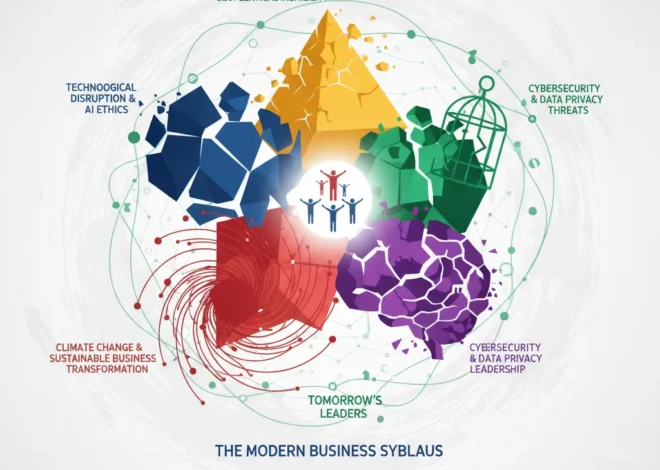
Beyond the Billions: Decoding Toyota’s $10 Billion Strategic Bet on the American Economy
In the world of corporate finance and global economics, few announcements carry the weight of a ten-figure investment pledge from an industrial titan. When Toyota, a benchmark for manufacturing excellence, declared its intention to invest up to $10 billion in the United States over the next five years, it was more than just a headline; it was a profound statement of strategy, a geopolitical maneuver, and a significant bet on the future of the American economy.
This commitment, which the Financial Times noted is separate from a broader $550bn Japanese pledge tied to trade negotiations, signals a deep-rooted strategy that extends far beyond assembly lines. For investors, finance professionals, and business leaders, understanding the layers behind this capital allocation is crucial. It’s a masterclass in risk management, market positioning, and long-term value creation that touches upon everything from global trade and supply chain resilience to the evolution of financial technology in corporate treasury management.
This analysis will deconstruct Toyota’s multi-billion-dollar pledge, exploring the strategic rationale, the profound economic ripple effects, and what it signals for the future of the automotive industry and international investing.
The Geopolitical Chessboard: More Than Just Cars
At first glance, a $10 billion investment is a straightforward business decision. However, its timing and context reveal a sophisticated understanding of the intersection between commerce and policy. Large-scale Foreign Direct Investment (FDI) from a major trading partner is often a powerful tool in international diplomacy. In an environment of shifting trade policies and tariff discussions, such a commitment serves as a significant gesture of goodwill and economic partnership.
By anchoring more of its production and capital within the U.S., Toyota not only insulates itself from potential protectionist measures but also aligns its corporate interests with American economic prosperity. This creates a powerful narrative of job creation and local investment, a narrative that resonates deeply in the political sphere. According to the Bureau of Economic Analysis, foreign-owned U.S. affiliates directly employ millions of Americans, making FDI a cornerstone of the nation’s economic vitality. Toyota’s investment reinforces this trend, demonstrating a commitment that transcends mere market access.
This strategic capital deployment is a classic example of how multinational corporations navigate the complex dynamics of the global economy, using investment as a lever to foster stability and predictability in their most critical markets.
De-risking and Re-shoring: The New Economics of Manufacturing
The last decade has provided a series of harsh lessons on the fragility of global supply chains. From natural disasters to pandemics and geopolitical friction, the vulnerabilities of just-in-time, trans-oceanic logistics have been laid bare. Toyota’s investment can be seen as a direct response to this new reality—a strategic move to build resilience by localizing production.
The core benefits of this approach include:
- Reduced Logistical Complexity: Building vehicles closer to the end consumer dramatically cuts down on shipping times, costs, and exposure to port congestion or international disputes.
– Currency Fluctuation Mitigation: By incurring costs (labor, materials) in the same currency as its revenue (U.S. dollars), Toyota can better hedge against volatile foreign exchange markets, a critical concern in corporate finance.
– Supply Chain Control: A localized manufacturing hub allows for a tighter, more responsive supply chain, enabling better inventory management and quicker adaptation to shifts in consumer demand. This is where modern financial technology comes into play, as sophisticated fintech platforms are essential for managing the intricate cash flows and supplier payments within these complex ecosystems.
This shift isn’t just a defensive maneuver; it’s an offensive play to create a more agile and efficient operational footprint in North America, one of the company’s most important revenue centers. Beyond the Backlash: Why Smart Money is Still Betting on Corporate Diversity
The Economic Ripple Effect: A Multi-Billion Dollar Stimulus
An investment of this magnitude reverberates through every level of the economy. From the national stock market to local main streets, the impact is both broad and deep. Understanding these effects is key for anyone involved in finance, banking, or economic analysis.
Macroeconomic Impact
On a national scale, this $10 billion infusion acts as a direct stimulus to the U.S. manufacturing sector. It contributes to GDP growth, enhances productivity, and creates thousands of high-skilled, high-paying jobs. The impact extends beyond the factory gates; for every direct manufacturing job created, several indirect jobs are supported in logistics, materials supply, construction, and local services. This “multiplier effect” is a fundamental principle of economics and is why such investments are so coveted by governments.
Impact on Financial Markets and Investing
For those tracking the stock market, this announcement is a bullish long-term signal for Toyota (NYSE: TM). While a massive capital expenditure (CapEx) can pressure short-term free cash flow, it demonstrates a clear vision for future growth and market share consolidation. Investors see a company that is proactively managing geopolitical risk and investing in its core markets. This can lead to a re-rating of the stock as analysts price in lower risk and higher, more stable future earnings. It also positively impacts the entire U.S. automotive supply chain, from raw material providers to technology startups, making the entire sector more attractive for investing and trading activities. The New Nuclear Shadow: How Geopolitical Tensions Are Redefining Global Finance and Investment Strategy
The Role of Advanced Financial Management
Managing a $10 billion, five-year, multi-state investment is a monumental task for a corporate treasury department. This is where the synergy between traditional banking and modern financial technology becomes critical. The project will involve complex financing structures, currency hedging, and risk management strategies. Increasingly, corporations are leveraging sophisticated fintech platforms to optimize cash flow, manage supplier payments, and even use technologies like blockchain for transparent and secure tracking of components through the supply chain, particularly for high-value items like EV batteries.
A Snapshot of Toyota’s Current American Footprint
To fully appreciate the scale of this new commitment, it’s helpful to visualize Toyota’s existing presence in the United States. This is not a new entrant but a deeply embedded corporate citizen doubling down on its investment. The following table provides a summary of their major manufacturing operations prior to this new pledge.
| U.S. Plant Location | Primary Products | Established Year |
|---|---|---|
| Georgetown, Kentucky (TMMK) | Camry, RAV4, Engines | 1986 |
| Princeton, Indiana (TMMI) | Highlander, Sienna, Sequoia | 1996 |
| Buffalo, West Virginia (TMMWV) | Engines, Transmissions | 1996 |
| Huntsville, Alabama (TMMAL) | Engines | 2001 |
| San Antonio, Texas (TMMTX) | Tundra, Sequoia | 2003 |
| Blue Springs, Mississippi (TMMMS) | Corolla | 2007 |
Data compiled from Toyota’s official U.S. operations information. This table illustrates the deep manufacturing roots the company already has in the country, which this new investment will expand upon.
The End of Free Rides: Why the UK is Gearing Up for Pay-Per-Mile EV Charging
Conclusion: A Strategic Investment in the Future
Toyota’s pledge to invest $10 billion in the United States is a landmark event in corporate strategy and international economics. It is far more than a simple factory expansion; it is a calculated, multi-faceted strategy designed to navigate geopolitical currents, fortify supply chains, and position the company for the next generation of automotive technology.
For the financial community, it serves as a powerful case study in long-term capital allocation, demonstrating how prudent investing can simultaneously generate shareholder value and create broad economic benefits. As this capital is deployed over the next five years, it will not only reshape parts of the American manufacturing landscape but also offer a clear signal that, for a global leader like Toyota, the U.S. remains a critical hub of innovation, production, and growth.


